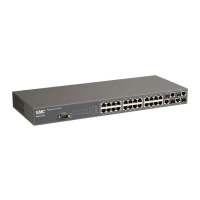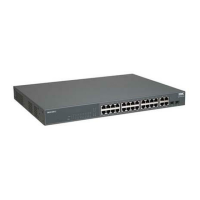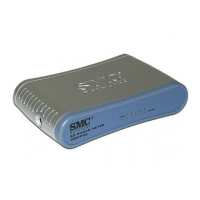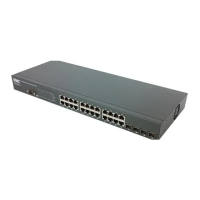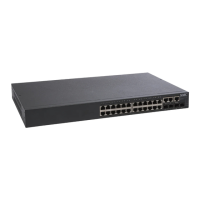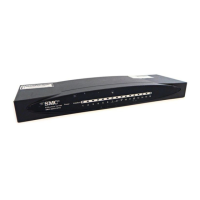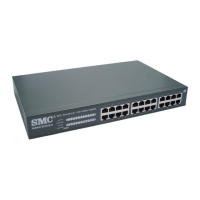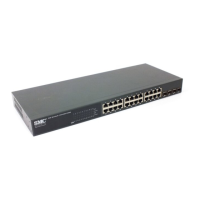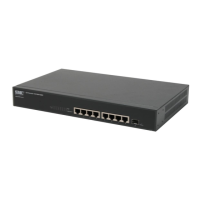IP I
NTERFACE
C
OMMANDS
36-46
Default Setting
No default entries
Command Mode
Global Configuration
Command Usage
• The ARP cache is used to map 32-bit IP addresses into 48-bit
hardware (i.e., Media Access Control) addresses. This cache includes
entries for hosts and other routers on local network interfaces defined
on this router.
• The maximum number of static entries allowed in the ARP cache is
128.
• You may need to enter a static entry in the cache if there is no response
to an ARP broadcast message. For example, some applications may
not respond to ARP requests or the response arrives too late, causing
network operations to time out.
Example
Related Commands
clear arp-cache
show arp
arp-timeout
This command sets the aging time for dynamic entries in the Address
Resolution Protocol (ARP) cache. Use the no form to restore the default.
Syntax
arp-timeout seconds
no arp-timeout
seconds - The time a dynamic entry remains in the ARP cache.
(Range: 300-86400; 86400 is one day)
Console(config)#arp 10.1.0.19 01-02-03-04-05-06
Console(config)#
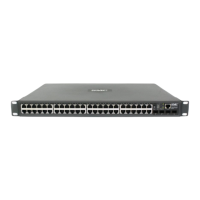
